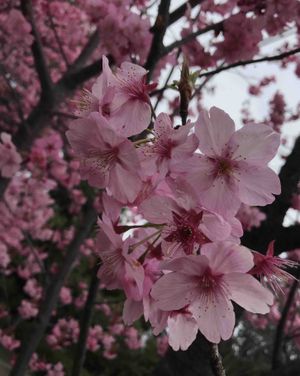The 100 Famous Japanese Mountains (日本百名山)
Many hikers across Japan strive to climb all 100, but it is no easy feat. How was the list created and what are the mountains like?
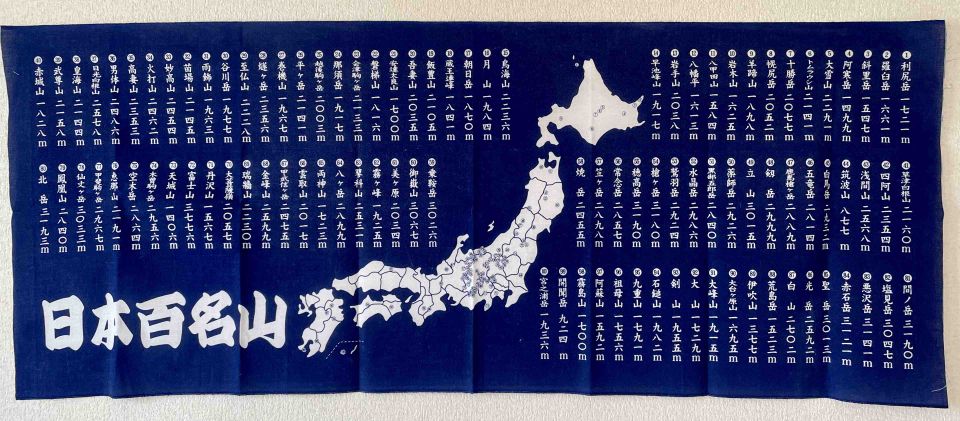
Not sure where you are in the world, but the temperature is starting to drop here in Tokyo. Goodbye hot humid summer and welcome Fall. Speaking of which, what a great time to start hiking up some mountains. How about I introduce you to...
The 100 Famous Japanese Mountains (日本百名山)
Sounds grand doesn’t it? Just as the name says, this list of 100 mountains is famous in Japan and well admired. Many hikers across Japan strive to climb all 100, but it is no easy feat. While Japanese mountains are not that tall (all less than 3,776 m (12,389 ft)), some can be quite steep and treacherous – only contributing to the impressiveness of those who complete all 100. To give you an idea, Mountain Everest is 8,848 m (29,031 ft), and Mountain Kilimanjaro is 5,895 m (19,341 ft).
Let’s take a look at how this list was established and some of the most famous, of the famous.
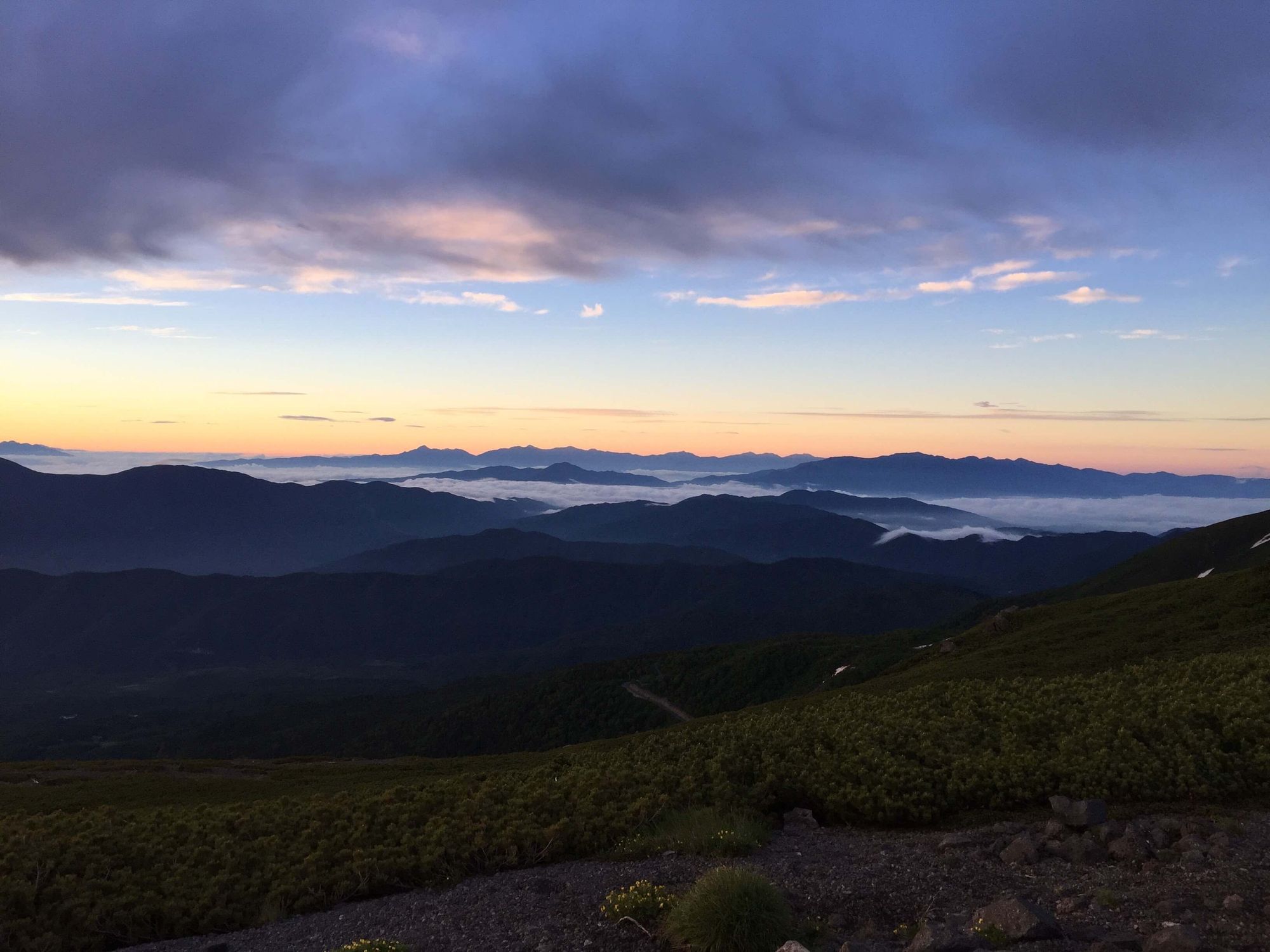
The Origin of the 100 Famous Japanese Mountains
The 100 Famous Japanese Mountains, or Nihon Hyaku Meizan was created by Kyuya Fukada (深田久弥) in 1964. After climbing for about 50 years, he published a collection of essays about the mountains called, “One Hundred Mountains of Japan (日本百名山).” He was a famous mountaineer and author. Ironically, he passed away at the age of 68 while hiking up a mountain due to a stroke.
Since establishing the 100 Famous Japanese Mountains, there have been other similar lists that people aspire to climb such as the 100 Flower Mountains (Hana no Hyakumeizan 花の百名山), and certain prefectures have even created their own such as Hokkaido’s 100 Famous Mountains (Hokkaido no Hyaku Meizan 北海道の百名山.)
For those who are interested in the Japanese Kanji the spelling is:
日本=Japan, 百= Hundred, 名=Famous 山=Mountain(s)
How were the mountains chosen?
As the 100 mountains were chosen by just one person, it is unsurprising that there is controversy over the selected mountains. That said, as someone who has climbed over 25 mountains in Japan, and 3 on the list, the selected mountains are quite grand. Each mountain must fulfill one of the three criteria below:
The main criteria. The mountain must
- Be seen as “Magnificent”
- Have a long history with the people
- Have unique traits or characteristics, such a shape, traditions, or phenomenons
In addition, Fukada must have climbed the mountain and the mountain must be over 1,500 meters (4,921 ft) tall.
So you can see how these criteria are subjective, and a bit objective in the accidental way.
Five Famous Mountains [Sample Selection]
Below, I will highlight five famous, of the famous mountains. Due to the subjectivity of the list, the following mountains are were not chosen against any criteria (except for Mtn. Fuji because it is a given), but rather a small sample to give you an idea of some of the mountains.
1. Mountain Fuji (富士山)

You saw it coming. The most prominent mountain of Japan and one of the most important icons. At 3,776 m (12,389 ft), it is the tallest mountain in Japan. In spite of this, almost anyone in good health can climb it.
Due to the cultural significance of Mtn. Fuji, 200,000-320,000 people climb during the climbing season which is July through September. The rest of the year, the mountain is covered in snow and becomes quite treacherous. People can, however, climb about halfway up the mountain – basically until you hit the snow. This part of the hike is much more beautiful and filled with forest. The upper half (the part that is only open during the summer), is pretty much just bare rock. Not a fun hike to be quite frank. It’s the price to pay to go to the tallest mountain of Japan.
Mtn. Fuji is beautiful from afar, but kind of ugly up close.
2. Mountain Yarigatake (槍ヶ岳)
Mt. Yari is in Northern Alps and is 3,180 m (10,430 ft.) This mountain is known for its distinct peak. Because of this, it is sometimes referred to as the “Matterhorn of Japan.”
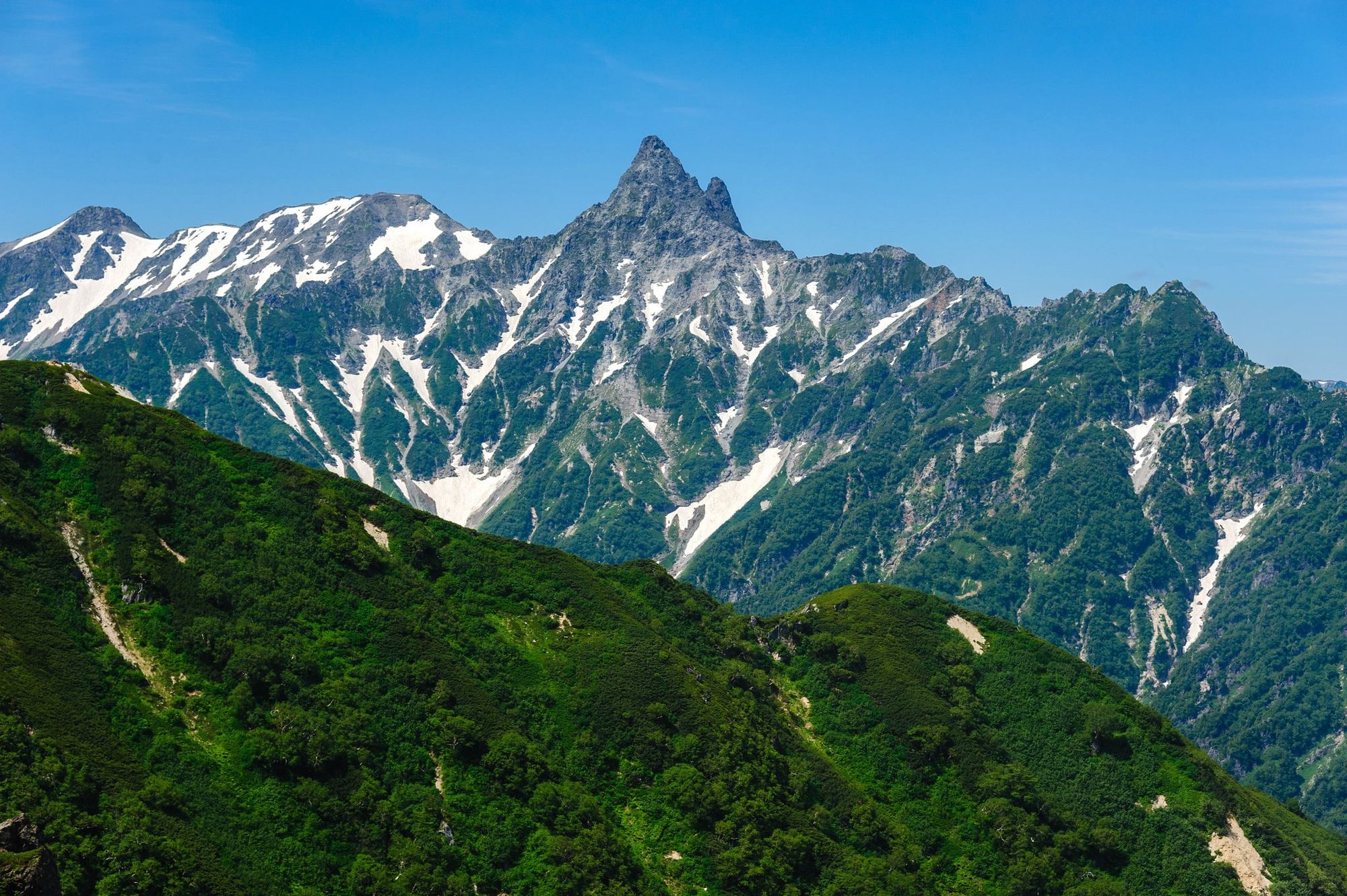
Photo: Kirill Skorobogatov
3. Kirishimayama (霧島山)
These mountains are located in Kyushu (九州), Japan’s southernmost main island, and are 1,700 m (5,600 ft.) In addition, the mountains are volcanic and still active. The fun thing about Kirishimayama is the name.
The Kanji is:
- 霧 Fog
- 島 Island
- 山 Mountain
So the name is literally, “fog island mountain.” In addition, another unique feature is, well just take a look at the photo below.
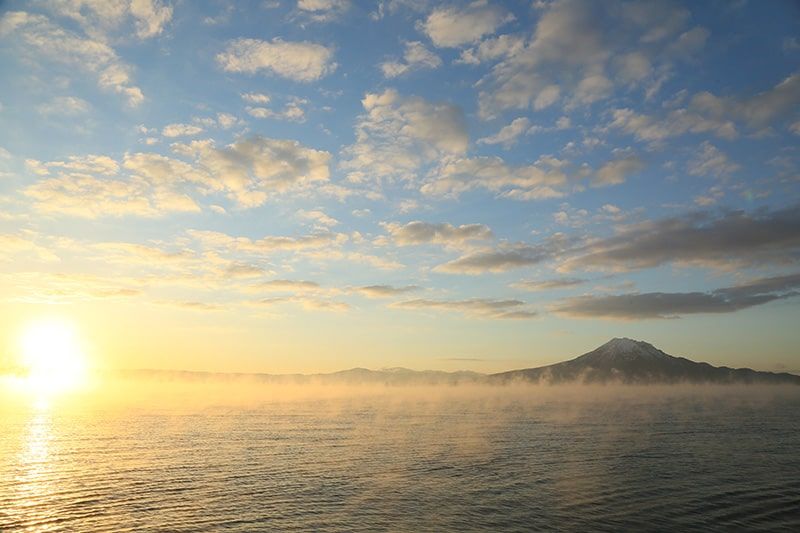
4. Mt. Rishirizan (利尻山)
This mountain is located in Hokkaido, Japan’s most northern major island. The cool thing about Mt. Rishirizan is that it is an island.
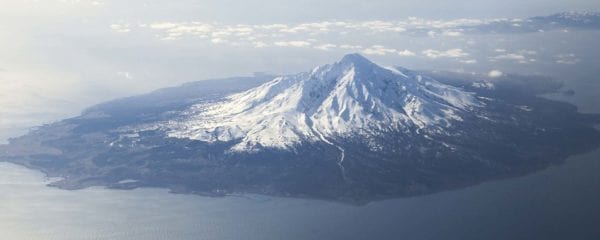
Since it is an island, people have to start at sea level (0 m) to reach the top at 1,721 m (5,646 ft.), which takes about 8 hours.
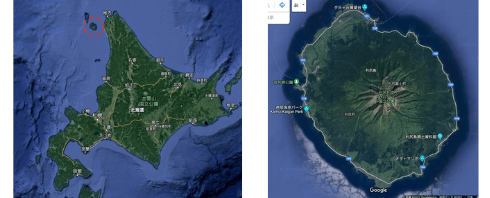
The small round island (red circle) in around the tip of the Hokkaido (on the left) is Mt. Rishirizan
5. Mountain Norikura (乗鞍岳)
Mt. Norikura (3,025 m (9,926 ft.)) is located in Nagano prefecture, home to the Japanese Alps. Mt. Norikura is in the Northern Alps and stands at 3,025 m. While not unique to Mt. Norikura, there is a bus that goes to the top. The bus runs as early as 3:30 am, so people can see the goraiko (ご来光.) This is the special word in Japanese when you view the sunrise from the top of a mountain.
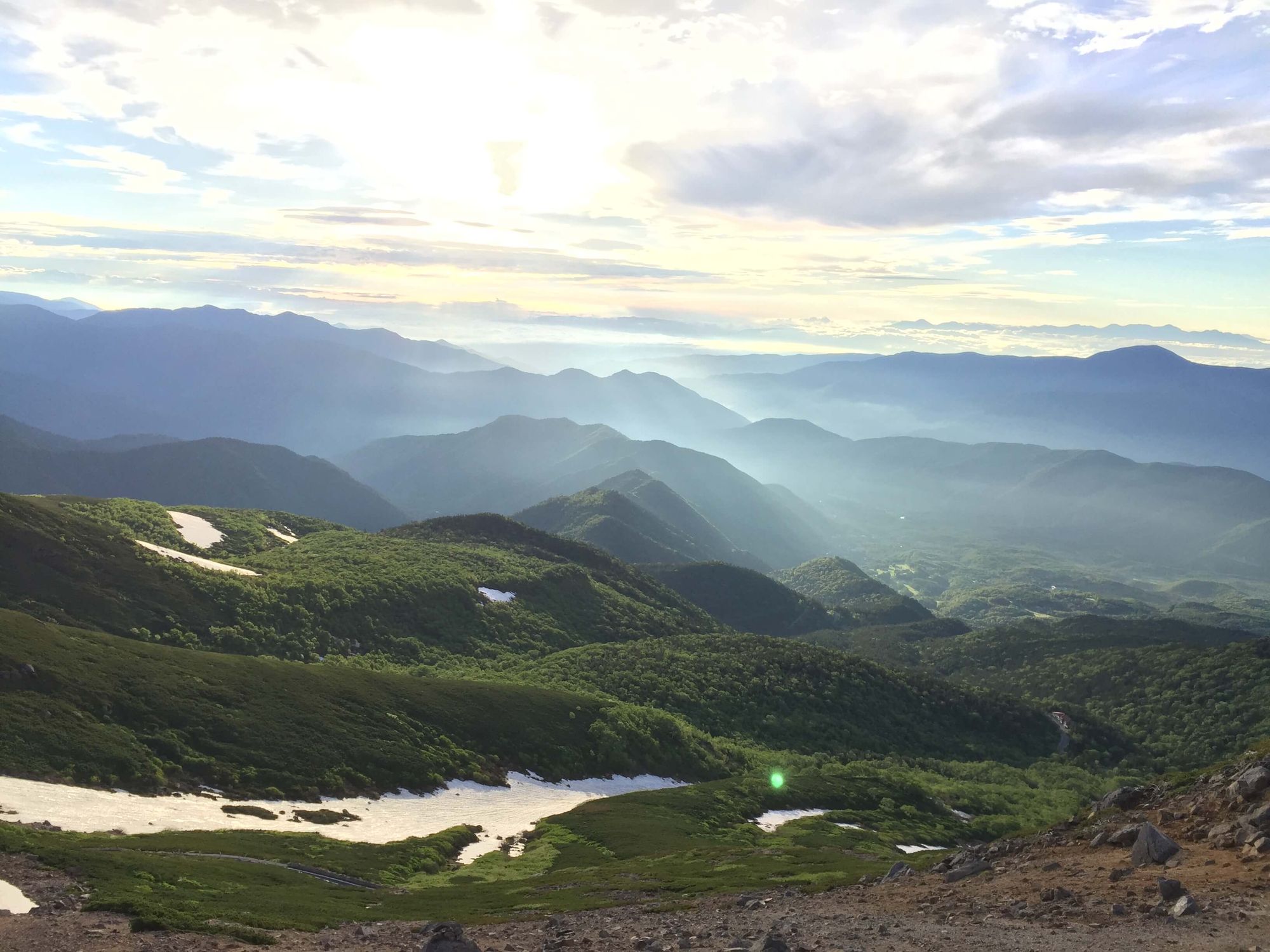
As you can imagine, it takes your breath away.
In ending
While this list might seem like a lot, Japan has approximately 18,000 mountains, meaning that this list is only about 0.006% of all mountains. Are they the most famous and best? Well, famous is hard to determine, but best is up to you. Which mountain was your favorite? Would you want to climb any of them?
Unsolicited Recommendation #14
Want to climb a mountain on your trip to Japan, but don’t have that much time, gear, and/or experience? I recommend Mt. Takao. It is only about an hour away from Tokyo and the perfect beginner mountain, with pretty much everything you could ask for in Japan, including a temple, cable car, onsen (Japanese hot spring (at the bottom)), and a restaurant (near the top.)
For those hikers and nature lovers out there, a highly recommend a trip taking a visit to a mountain, whether you climb it or not.
Full list of 100 Famous Japanese Mountains
Hokkaido (北海道)
- Mt. Rishiri (利尻山)
- Mt. Rausu (羅臼岳)
- Mt. Shari (斜里岳)
- Mt. Meakan (雌阿寒岳)
- Mt. Asahi (旭岳)
- Mt. Tomuraushi (トムラウシ山)
- Mt. Tokachi (十勝岳)
- Mt. Poroshiri (幌尻岳)
- Mt. Yōtei (羊蹄山)
Tohoku (東北)
- Mt. Iwaki (岩木山)
- Mt. Hakkoda (八甲田山)
- Mt. Hachimantai (八幡平)
- Mt. Iwate (岩手山)
- Mt. Hayachine (早池峰)
- Mt. Chokai (鳥海山)
- Mt. Gassan (月山)
- Mt. Asahi (朝日岳)
- Mt. Zao (蔵王山)
- Mt. Iide (飯豊山)
- Mt. Azuma (吾妻山)
- Mt. Adatara (安達太良山)
- Mt. Bandai (磐梯山)
- Mt. Aizu-komagatake (会津駒ヶ岳)
- Mt. Nasu (那須岳)
Joshinetsu (上信越)
- Mt. Echigo-komagatake (越後駒ヶ岳)
- Mt. Hira (平ヶ岳)
- Mt. Makihata (巻機山)
- Mt. Hiuchi (燧岳)
- Mt. Shibutsu (至仏岳)
- Mt. Tanigawa (谷川岳)
- Mt. Amakazari (雨飾山)
- Mt. Naeba (苗場山)
- Mt. Myoko (妙高山)
- Mt. Hiuchi (火打山)
- Mt. Takazuma (高妻山)
Kita-Kanto (北関東)
- Mt. Nantai (男体山)
- Mt. Okushirane (奥白根山)
- Mt. Sukai (皇海山)
- Mt. Hotaka (武尊山)
- Mt. Akagi (赤城山)
- Mt. Kusatsu-Shirane (草津白根山)
- Mt. Azumaya (四阿山)
- Mt. Asama (浅間山)
- Mt. Tsukuba (筑波山)
Kita Alps (北アルプス)
- Mt. Shirouma (白馬岳)
- Mt. Goryu (五竜岳)
- Mt. Kashimayari (鹿島槍岳)
- Mt. Tsurugi (剣岳)
- Mt. Tateyama (立岳)
- Mt. Yakushi (薬師岳)
- Mt. Kurobegoro (黒部五郎岳)
- Mt. Kuro (黒岳) [aka Mt. Suisho (水晶岳) ]
- Mt. Washiba (鷲羽岳)
- Mt. Yari (槍ヶ岳)
- Mt.Hotaka (穂高岳)
- Mt. Jonen (常念岳)
- Mt. Kasa (笠ヶ岳)
- Mt. Yake (焼岳)
- Mt. Norikura (乗鞍岳)
- Mt. Ontake (御岳)
Yatsu-ga-take Region (八ヶ岳)
- Utsukushi-ga-hara (美ヶ原)
- Mt. Kirigamine (霧ヶ峰)
- Mt. Tateshina (蓼科山)
- Yatsu-ga-take(八ヶ岳)
Chichibu-Tama-Kai National Park (秩父多摩甲斐国立公園)
- Mt. Ryokami (両神山)
- Mt. Kumotori (雲取山)
- Mt. Kobushi (甲武信岳)
- Mt. Kinpu (金峰山)
- Mt. Mizugaki (瑞牆山)
- Mt. Daibosatsu (大菩薩山)
Mt. Fuji Region (富士山)
- Mt. Tanzawa (丹沢山)
- Mt. Fuji (富士山)
- Mt. Amagi (天城山)
Chuo Alps Region (中央 アルプス)
- Mt. Kiso-komagatake (木曽駒ヶ岳)
- Mt. Utsugi (空木岳)
- Mt. Ena (恵那山)
Minami Alps (南アルプス)
- Mt. Kai-komagatake (甲斐駒ヶ岳)
- Mt. Senjo (仙丈ヶ岳)
- Mt. Houou (鳳凰山)
- Mt. Kitadake (北岳)
- Mt. Ainodake (間ノ岳)
- Mt. Shiomi (塩見岳)
- Mt. Warusawa (悪沢岳)
- Mt. Akaishi (赤石岳)
- Mt. Hijiri (聖岳)
- Mt. Tekari (光岳)
Hokuriku Region
- Mt. Hakusan (白山)
- Mt. Arashima (荒島岳)
Kansai Region (関西)
- Mt. Ibuki (伊吹山)
- Mt. Odaigahara (大台ヶ原山)
- Mt. Omine (大峰山)
- Mt. Daisen (大山)
Shikoku (四国)
- Mt. Tsurugi (剣山)
- Mt. Ishizuchi (石鎚山)
Kyushu (九州)
- Mt. Kuju (九重山)
- Mt. Sobo (祖母山)
- Mt. Aso (阿蘇山)
- Mt. Kirishima (霧島山)
- Mt. Kaimon (開聞岳)
- Mt. Miyanoura (宮之浦岳)

